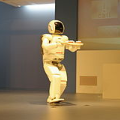Purpose: A fundamental problem in designing safe machine learning systems is identifying when samples presented to a deployed model differ from those observed at training time. Detecting so-called out-of-distribution (OoD) samples is crucial in safety-critical applications such as robotically-guided retinal microsurgery, where distances between the instrument and the retina are derived from sequences of 1D images that are acquired by an instrument-integrated optical coherence tomography (iiOCT) probe. Methods: This work investigates the feasibility of using an OoD detector to identify when images from the iiOCT probe are inappropriate for subsequent machine learning-based distance estimation. We show how a simple OoD detector based on the Mahalanobis distance can successfully reject corrupted samples coming from real-world ex-vivo porcine eyes. Results: Our results demonstrate that the proposed approach can successfully detect OoD samples and help maintain the performance of the downstream task within reasonable levels. MahaAD outperformed a supervised approach trained on the same kind of corruptions and achieved the best performance in detecting OoD cases from a collection of iiOCT samples with real-world corruptions. Conclusion: The results indicate that detecting corrupted iiOCT data through OoD detection is feasible and does not need prior knowledge of possible corruptions. Consequently, MahaAD could aid in ensuring patient safety during robotically-guided microsurgery by preventing deployed prediction models from estimating distances that put the patient at risk.
翻译:摘要:设计安全的机器学习系统的一个基本问题是识别在训练时观察到的样本与部署模型时出现的样本的差异。检测所述的离群样本是关键的在安全关键应用程序如机器人引导下的视网膜微创手术中,其中来自集成光学相干断层扫描(iiOCT)探针的1D图像序列导出仪器和视网膜间的距离。方法:本文研究了使用离群检测器来识别来自iiOCT探针的图像为随后的基于机器学习的距离估计不适当的可能性。我们展示了如何使用基于马氏距离的简单离群检测器成功拒绝来自真实世界的离体猪眼的损坏样本。结果:我们的结果表明,所提出的方法可以成功检测离群样本并帮助将下游任务的性能保持在合理的水平。MahaAD outperformed与相同类型的破坏训练的监督方法相比,在检测来自真实世界的毁坏的iiOCT样本方面,实现了最佳性能。结论:结果表明,通过离群检测来检测毁坏的iiOCT数据是可行的,并且不需要先前对可能的毁坏进行了解。因此,MahaAD可以防止部署的预测模型估计会使患者处于危险之中的距离,从而有助于在机器人引导的微创手术过程中确保患者的安全。


